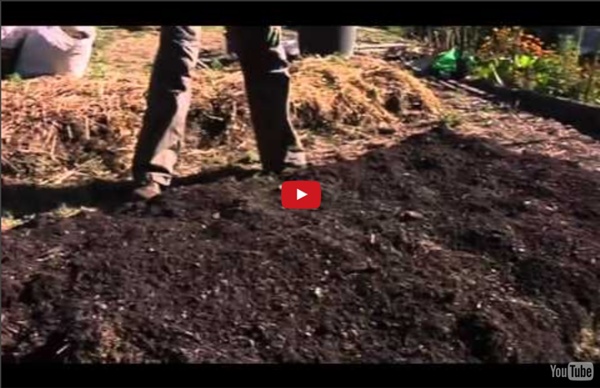



No-dig gardening No-dig gardening is a non-cultivation method used by some organic gardeners. The origins of no-dig gardening are unclear, and may be based on pre-industrial or nineteenth-century farming techniques.[1] Masanobu Fukuoka started his pioneering research work in this domain in 1938, and began publishing in the 1970s his Fukuokan philosophy of "Do Nothing Farming", which is now acknowledged by some as the tap root of the Permaculture movement.[2] Two pioneers of the method in the twentieth century included F. C. King, Head Gardener at Levens Hall, South Westmorland, in the Lake District of England, who wrote the book "Is Digging Necessary?" in 1946 and a gardener from Middlecliffe in the UK, A. History[edit] Methods[edit] Another no-dig method is sheet mulching wherein a garden area is covered with wetted paper or cardboard, compost and topped off with landscape mulch. Esther Deans OAM, an Australian gardener and author, pioneered no dig gardening. See also[edit] References[edit] King, F.
Farmscaping "Farmscaping" is a holistic approach to pest control on farms that focuses on increasing biodiversity in order to maintain healthy populations of beneficial insects, birds, bats, and other wildlife as part of an ecological pest management program. Farmscaping often treats beneficial wildlife as a kind of "minature livestock" that must be managed and provided for for just like cows, sheep, chickens, and other farm animals. Farmscapers use observation and science to plan hedgerows, flower beds, cover crops, and water reservoirs to favor beneficial wildlife over pests. Benefits of Farmscaping Farmscaping reduces the need for pesticides, lowering costs and reducing exposure to potentially harmful chemicals by farmworkers and consumers. Farmscaping is also simple and generally inexpensive to implement. Finally, in addition to the ecological and environmental benefits of providing habitat for wildlife and increasing biodiversity, farmscaping also increases natural beauty for resident humans.
No dig gardens - how to grow vegetables by gardening without digging or tilling 5 Secrets to a ‘No-work’ Garden It took over 20 years of gardening to realize that I didn’t have to work so hard to achieve a fruitful harvest. As the limitless energy of my youth gradually gave way to the physical realities of mid-life, the slow accretion of experience eventually led to an awareness that less work can result in greater crop yields. Inspired in part by Masanobu Fukuoka’s book, One Straw Revolution, my family experimented with gardening methods which could increase yields with less effort. Fukuoka spent over three decades perfecting his so-called “do-nothing” technique: commonsense, sustainable practices that all but eliminate the use of pesticides, fertilizer, tillage, and perhaps most significantly, wasteful effort. Here are the strategies we used which enabled us to greatly increase our garden yield, while requiring less time and less work. 1. With ‘no-till’ gardening, weeding is largely eliminated. 2. Gardeners are always on the lookout for free sources of clean organic mulch to add to their garden.
4 Simple Steps to Grow a Hundred Pounds of Potatoes in a Barrel Container gardening isn't only for savvy urban gardeners and folks with limited space to grow, it can also be for folks who want to maximize their yields in a controlled environment. Not only does growing potatoes in a barrel reduce the amount of weeding and exposure to pests and fungi, you don't even have to risk shovel-damage to the tender potatoes by digging them out of the ground when they're done, just tip the container over! After extensive research to plan my own potatoes-in-a-barrel, I've boiled all of the recommendations down to 4 simple steps to a winning potato harvest. 1. You'll need to pick out a container such as a 50-gallon trash barrel or one of those half whiskey barrel planters. Good drainage is critical for the cultivation of healthy potatoes so you'll want to cut or drill a series of large drainage holes in the bottom and bottom sides of your container. 2. Fill in the bottom of your container with about 6 inches of loose planting mix and compost. 3. 4.
Vegetable Gardening Plans & Designs for an Indoor or Outdoor Garden Permaculture Principles Grow The Easiest Garden on Earth